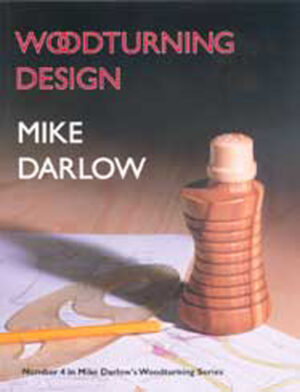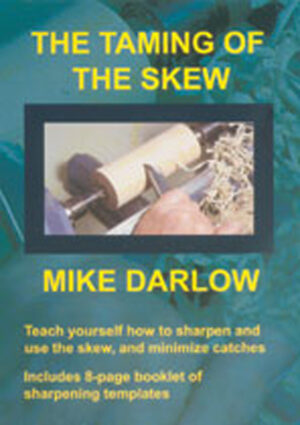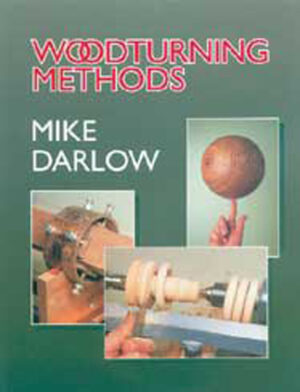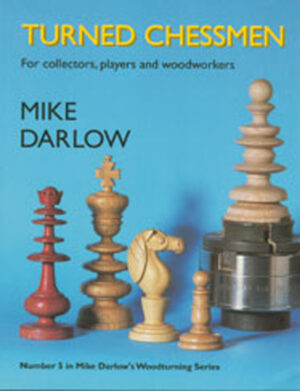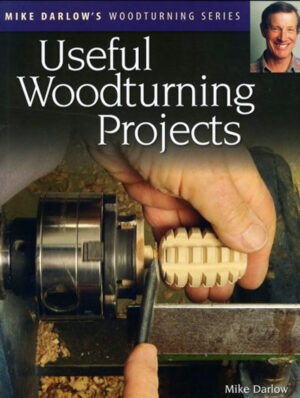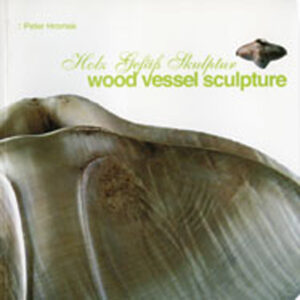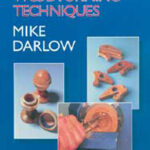WOODTURING TECHNIQUES
$35.00
Available on back-order
by Mike Darlow
Softcover
210 x 280mm
192pp
Published by The Melaleuca Press, Lot 17 Wilsons Lane, Exeter
ISBN 0-9589609-4-1
As reviewed in The Australian Woodworker Issue 99
Woodturning Techniques is – by the author’s own account – closely related to Woodturning Methods, and contains the remaining techniques that did not fit therein.
It is written in Mike’s usual erudite fashion, which may prompt some readers to occasionally search their dictionaries for a definition (a diversion which this reviewer found enjoyable and enriching).
Lovers of historical knowledge will revel in some of the information he has amassed in this volume, in particular the thick section covering the evolution of thread cutting techniques and machinery, from the earliest recorded devices to the present day.
Information on glues and gluing includes unusual techniques for joining timber with adhesive, such as the feather jointing technique detailed in issue #97, p.52. Split turnings, coopering, ring turnings and other complex decorative effects – such as laminating and veneering techniques – are also covered. Amazing examples of laminated and veneered work are shown throughout.
Grinding methods are revisited, with a strong focus on the issue of grinding wheel wear, and its affect on jig set-up. He clearly defines the problem – the gradually reducing radius of the grinding wheel impacting on the angle setting of grinding jigs – and he provides several simple two pin templates for adjusting the settings to compensate for most tools, within an acceptable range of deviation from the desired norms.
The coverage provided on this subject will thrill those who feel most comfortable with precise grinding angles and clear instructions for obtaining them. His analysis covers a range of grinding jigs, from platforms to the handle end support type.
Cup chuck techniques include a technical description of the ‘flute down’ hollowing method. Step-by-step frontal and profile shots (the later with a cut-away of the form being turned, to show the tool in its cutting position) are extremely helpful. The author claims that this method allows for a faster removal of waste because it presents the tool in a cutting action, though it does have some disadvantages too, which are mentioned.
Various unique cup chucking systems are reviewed, which should be informative to those who have incomplete knowledge of the systems available, such as the eccentric axis turning chuck by Australian lathe tool inventor Bruce Leadbeatter.
Faceplate turning techniques are expanded upon, with material not yet presented in Fundamentals of Woodturning or Methods of Woodturning. Here, Darlow looks at radially grained rings, with a detailed description (including many photos) showing how to make a curtain ring. Also, a most interesting method for the production of multiple figures (such as a horse’s head for chess men), using the traditional ‘rived ring’ technique still practised by professional turners from the Erz Mountains in eastern Germany.
Commercial bowl nesting systems (for minimising waste when bowl turning) are studied, and a plan for making a cage chuck – for reverse chucking and cleaning up the bottom of a bowl – is included.
The subject covered at greatest length is the evolution of thread cutting. Methods throughout history are detailed, often with handsome images from engravings or rare books.
He includes a technique for hand cutting screws and threads, and making a tylos (a type of nut). Other devices for cutting threads by hand – such as screw boxes, dies, thread chasers and so forth – are examined in depth. Following this is the history of lathe-based screw and thread cutting techniques. To shed light on the subject, Darlow relates the evolution of these mechanisms to other developments in industry.
Interesting esoterica such as illustrations of Whitworth (BSW), Unified (Sellers) and SI (Metric) thread forms, general thread geometry (including diagrams of pitch and lead for single, double triple and quadruple thread screws), complement the exhaustive analysis of the subject.
The author appears to have succeeded in examining the issue from all angles. The mechanical methods for thread production presented include means for rotating and traversing the workpiece, using a cheap compound slide with simple off-the-shelf attachments, and utilising fast-rotating cutters (which leave a cleaner cut than chasers). He even shows how to calibrate your equipment for the best results.
Of greatest practical application for most woodturners will be the information on chasing box threads by hand. Many readers will no doubt be thrilled to discover that any fastener – such as a machine screw – can be converted into a thread cutting device.
The detailed account of how to make a small sugar or spice caster (shaker), joined with male and female threads, will delight many. In closing, the author provides a preview of his next book, which is going to be on Design.
His intention is to show ‘how design should be integrated with the other processes involved in producing turned items’. No doubt this is a challenging subject, of which a serious examination is long overdue.
Other interesting tidbits include information on chatter tools and a method for producing a traditional nest of cups.
If the use of words like ‘appositely’ annoys you, then you may not like this book.Many of his critics accuse him of pedantry, but this reviewer felt complimented by the level of discourse maintained throughout the book.
Photos: Colour
Contents
Gluing
The Effects of Moisture on Wood and on Glue Joints
Structural Conglutination
Locating and Clamping Joints
Bickers and Feather Joints
Split Turnings and Paper Joints
Combined Turnings
Stacked Rings
Spiral Bowls
Decorative Conglutination
More-Complex Decorative Effects
Endnotes
Tool Grinding
The Problem of Grinding-Wheel Wear
Tilting-Platform Jigs
The O’Donnell Tool Sharpening System
Grinding Problem Tools
Handle-End Jigs
Pivoting Jigs
Combining Jigs
True-Grinding Curves
The Heli-Grind Jig
Summary
Grinding Wheels
Wheel Dressing and Balancing
Sharpening Flat Scrapers
Endnotes
Spindle Turning
Wire Burning
Cluster Legs
Cupchuck Turning
The Flute-Down Method of Cupchuck Hollowing
Finish-Turning Hollows
Nests of Cups
Chatterwork
Chucks
Endnotes
Faceplate Turning
Rings with Circular Cross Sections
Non-circular Rings
Rived Rings
Picture and Other Frames
Bolection and Inlay Moldings
Paterae
Polygonal Peripheries
Endnotes
Bowl Turning
The Preparation of Blanks
Turning Nests of Bowls
Reverse-Chucking Bowls
Endnotes
Threading
The History of Thread Cutting by Hand
The Early History of Thread Cutting in the Lathe
The Modern Era of Thread Cutting
Thread Geometry and Nomenclature
Thread Cutting, The Basic Methods
Cutting Threads in Stationary Wood
Threading by Rotating and Traversing the Workpiece
Threading by Rotating the Workpiece and Traversing the Cutter
Threading Metal
Endnotes
Where Next?
Index

